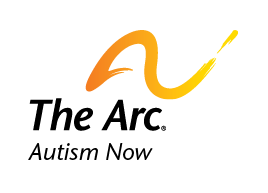How to Educate Important People in your Neighborhood
By Amy Goodman
Co-Director, Autism NOW Center
If you are a parent or family member of a loved one with autism or other developmental disabilities, you may be especially concerned with his/her safety in times of emergencies. Many parents worry if the police and other medical personnel will know how to properly approach or treat their son/daughter with autism or other developmental disabilities.
It may be a good idea for you to meet with first responders in person to help educate them about challenges and differences in communicating that people with autism and other developmental disabilities may have; however, hearing this from a family member may not be enough. Having a law enforcement professional come speak at your group or to the police in your town/ city can be very useful to help train first responders. Since these professionals possess knowledge in both the disabilities and law enforcement fields, they are able to educate the police, emergency medical technicians, firefighters and others about how to interact with children and adults with autism and other developmental disabilities.
Additionally, you may want to provide first responders with tips that they should be aware of when interacting with people with autism and other developmental disabilities. These tips may include:
- Making sure the individual is unarmed.
- Maintaining a safe distance between you and the individual because he/she may suddenly invade your personal space.
- Talking calmly and softly.
- Speaking in direct short phrases such as “stand up now” or “ get in the car.”
- Avoiding the use of slang expressions, because the individual may not know what they mean and take you literally.
- Repeating or rephrasing questions to help the individual understand the meaning.
- Considering the use of pictures, written phrases, or sign language to communicate.
- Examining the individual for presence of medical alert jewelry, tags, or an autism handout card.
- Modeling calming body language (such as slow breathing and keeping hands low).
- Modeling the behavior you want the individual to display.
- Not interpreting the individual’s failure to respond to orders or questions as a lack of cooperation.
- Seeking information and assistance from parents or others at the scene about how to communicate with the individual and ways to de-escalate the behavior.
- Avoiding stopping repetitive behaviors unless there is a risk of injury to yourself or others.
- If possible, turning off sirens, flashing lights and removing canine partners, crowds, or other sensory stimulation from the scene.
- Remaining alert to the possibility of outbursts or impulsive acts.
Using your discretion. If you have determined that the individual is unarmed and have established a safe place for them, then use all other available time to allow the individual to de-escalate themselves without your intervention.
Making police and other medical personnel aware of the challenges and differences in communicating that people with autism and other developmental/intellectual disabilities may have is essential. By sharing the knowledge that you have as a family member, as well as recruiting a professional to train first responders, you are promoting safety in your community by helping them understand how to interact effectively with people with autism and other developmental disabilities.
Amy Goodman is the Co-Director of the Autism NOW Center.
